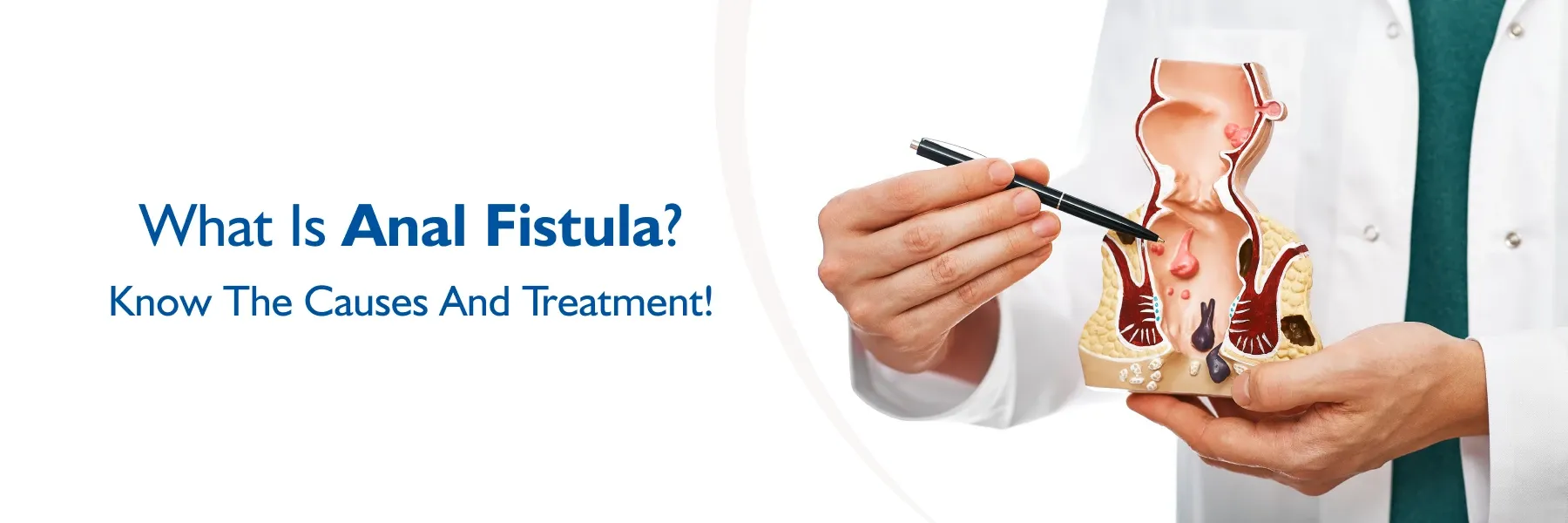
What is Anal Fistula? Know Causes, Symptoms and Treatment
What is Anal Fistula? Know the Causes and Treatment!
The term "anal fistula" describes a tiny tunnel that forms between the skin and the end of the bowel, close to the anus opening. An anal abscess is an infected wound that drains pus from your anus, and an anal fistula is typically a side effect of this condition. The main signs and symptoms include redness, swelling, and anal pain. The main course of treatment is surgery.
Experiencing Anal Fistula Symptoms? What Should You Watch Out for?
- Anal pain, frequently throbbing and intense.
- Fluid dripping from your anus in some areas.
- Redness and swelling (inflammation) in or near your anus.
- Difficult to hold poop
- Fever
- Pain while urinating
Secure your health with a second opinion. Make informed decisions and book your appointment today!
Get A Second OpinionWhat are the Main Causes of Anal Fistulas?
The most common cause of fistulas is trauma or surgery. Inflammation or infection. Some of the causes of anal fistula include: Perianal abscess is the most frequent cause of an anal fistula.
- Crohn's disease.
- Tuberculosis.
- Sexually transmitted infections
- Radiation for pelvic cancer.
- A severe wound or prior surgery to your nose.
- Actinomycosis
- Hidradenitis suppurativa
Types of Anal Fistula: What are they and How Do they Differ?
There are four types of anal fistulas:
- Intersphincteric: It opens into the skin outside the anus after passing through the internal sphincter.
- Transphincteric: The tract starts behind the anus or in the space between the internal and external sphincter muscles.
- Suprasphincteric: Anal fistula in which the fistula extends above the external sphincter after passing through the internal sphincter and into the perineum.
- Extrasphincteric: An extra sphincteric fistula is a distinct type of perianal fistula that develops when the rectum attaches to the perineum and extends laterally beyond the internal and external sphincters. It is incredibly uncommon.
What is Fistulotomy Surgery and How Does it Work?
- Fistulotomy: A fistulotomy is a surgical procedure used to drain and promote healing of a fistulous tract, such as an anal fistula. It is considered to be the most common type of anal fistula. This involves cutting a full-length incision to expose the fistula, allowing it to heal into a smooth scar. The internal fistula opening is cut, the contaminated tissue is scraped and flushed out, the tunnel is flattened, and it is stitched in place. The surgeon might have to cut out a portion of the tunnel in order to cure a more complex fistula.
- Reconstructive surgery: The reconstructive surgery for anal fistulas is to treat complicated or recurrent anal fistulas. During reconstructive surgery, the entire fistula tract and any contaminated tissue around it are usually removed.
- Seton placement: A seton is a piece of material, usually rubber or silk, inserted into the fistula tract to maintain the opening and permit drainage. This procedure can reduce inflammation and infection prior to reconstructive surgery.
- Filling the fistula with a special glue or plug: Fibrin glue or plug placement is the process of filling the fistula with a particular glue or plug; this is a less intrusive method than typical surgery.
Ready to take control of your health journey? Book your appointment now and start your path towards wellness today!
Book an AppointmentWhat Factors Impact Recovery Time After Anal Fistula Surgery?
Following anal fistula surgery, recovery time can vary depending on the procedure, complexity of the fistula, and personal factors. During the initial weeks, patients should receive pain management, a diet, and adequate rest. The healing process may require cleaning and drying of the surgical site, and dietary modifications may be advised. Follow-up meetings are scheduled to track the healing process and address any issues.
Long-term Recovery Involves:
- Gradually increasing activity levels.
- Avoiding heavy lifting and vigorous activities.
- Modifying food to encourage regular bowel movements.
Most patients can resume normal activities within a few weeks to a month. Monitoring for signs of infection is crucial. Recovery may take several weeks to months, and patience is essential.
Frequently Asked Questions
It's a small tunnel that forms between the skin and the end of the bowel, near the anus opening.
Surgery is considered to be the best-recommended option to treat anal fistula. A fistulotomy is the most common procedure done to correct an anal fistula.
It's a small tunnel that forms between the skin and the end of the bowel, near the anus opening.
Anal fistulas typically do not heal on their own and can produce uncomfortable symptoms, including pain and skin irritation. In most cases, surgery is advised.
An anal fistula is diagnosed clinically. Imaging techniques like MRI, Endoanal ultrasound, and epistolography are helpful in determining the course of the tract.
- When you are passing stool, avoid straining.
- Engage in regular exercise
- Consume foods high in fibre.
- Ensure you are getting enough water.
- Keep things dry and clean.
